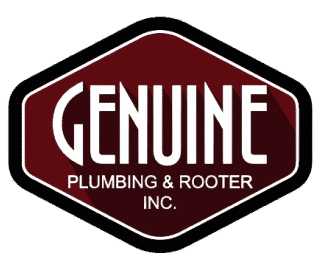Plumbing problems are an inevitable part of owning a home. From leaky faucets to clogged drains, these issues can cause frustration and inconvenience for homeowners. Ventura County homes are no exception, and it’s important to know how to identify and fix common plumbing problems to keep your home’s plumbing system in good working condition. In this article, we’ll discuss some of the most common plumbing problems that Ventura County homeowners face and provide practical solutions on how to fix them.
Leaky Faucets and Pipes
One of the most common plumbing problems in homes is leaky faucets and pipes. A dripping faucet can be annoying, but it can also waste a significant amount of water over time. Leaky pipes can cause damage to walls and floors, and lead to higher water bills. The good news is that fixing a leaky faucet or pipe is relatively simple and can save you money in the long run.
To fix a leaky faucet, start by turning off the water supply to the faucet. This can usually be done by turning the valve under the sink. Next, remove the handle and the cap on the faucet to access the cartridge. Check the cartridge for any signs of damage or wear and tear. If the cartridge is damaged, replace it with a new one. Reassemble the faucet and turn the water supply back on to test for leaks.
Leaky pipes can be a bit more complicated to fix and may require the help of a professional plumber. If you notice water stains on walls or ceilings, or hear the sound of running water when no faucets are in use, you may have a leaky pipe. Locate the source of the leak and turn off the water supply to that area. Use a pipe cutter to cut out the damaged section of pipe and replace it with a new piece. Be sure to use the correct type of pipe and fittings for your plumbing system.
Clogged Drains and Toilets
Another common plumbing problem is clogged drains and toilets. A clogged drain can cause water to back up into sinks, showers, and tubs, while a clogged toilet can result in an unpleasant mess. Clogs are typically caused by a buildup of hair, soap scum, food particles, or other debris in the pipes.
To clear a clogged drain, start by using a plunger. Place the plunger over the drain and push down and up several times to create suction. If the clog is stubborn, try using a drain snake to break it up and remove it. Avoid using chemical drain cleaners, as they can damage your pipes and harm the environment.
To clear a clogged toilet, use a plunger to create suction and push the clog through the pipes. If the clog is stubborn, try using a toilet auger to break it up and remove it. Be sure to use a plunger or auger specifically designed for toilets, as other types of plungers or augers can cause damage to the porcelain.
Low Water Pressure
Low water pressure can be a frustrating plumbing problem, especially when trying to take a shower or wash dishes. Low water pressure can be caused by a variety of factors, including clogged pipes, a malfunctioning pressure regulator, or a problem with the municipal water supply.
To fix low water pressure, start by checking your water valves. Make sure they are fully open and not partially closed. If the valves are open and you’re still experiencing low water pressure, check for any leaks in your pipes. Leaks can cause a drop in water pressure and should be repaired as soon as possible. If you’re unable to find the source of the problem, contact a professional plumber to diagnose and fix the issue.
Running Toilets
A running toilet is not only annoying, but it can also waste a significant amount of water over time. A running toilet is typically caused by a faulty flapper or fill valve. The flapper is the rubber seal that covers the flush valve, while the fill valve is responsible for refilling the tank after each flush.
To fix a running toilet, start by turning off the water supply to the toilet. Remove the tank lid and check the flapper for any signs of damage or wear and tear. If the flapper is damaged, replace it with a new one. If the flapper is in good condition, check the fill valve for any signs of damage or wear and tear. If the fill valve is damaged, replace it with a new one. Reassemble the toilet and turn the water supply back on to test for leaks.
Water Heater Issues
Water heater issues can cause a lack of hot water or even a complete loss of hot water in your home. Some common water heater problems include a faulty thermostat, a malfunctioning pilot light, or sediment buildup in the tank.
To fix water heater issues, start by checking the thermostat and making sure it is set to the correct temperature. If the thermostat is set correctly, check the pilot light to ensure it is lit. If the pilot light is not lit, relight it according to the manufacturer’s instructions. If the pilot light is lit and you’re still experiencing issues, check for sediment buildup in the tank. Sediment buildup can cause the water heater to work less efficiently and should be flushed out periodically. If you’re unable to diagnose and fix the issue, contact a professional plumber for assistance.
DIY Fixes for Common Plumbing Problems
While some plumbing problems may require the help of a professional plumber, many can be fixed with a bit of DIY know-how. Here are some tips for fixing common plumbing problems on your own:
- Use a plunger to clear clogs in sinks, tubs, and toilets.
- Use a drain snake to break up stubborn clogs.
- Replace worn or damaged faucet cartridges to fix leaky faucets.
- Replace worn or damaged flappers or fill valves to fix running toilets.
- Flush your water heater periodically to remove sediment buildup.
When to Call a Professional Plumber
While DIY fixes can be effective for many plumbing problems, there are some issues that require the help of a professional plumber in Ventura County. Here are some instances when you should call a plumber:
- You have a leaky pipe that requires cutting and replacing.
- Your water heater is not producing any hot water.
- You’re unable to locate the source of a plumbing problem.
- You’re experiencing low water pressure throughout your home.
- You’re dealing with a sewer line backup.
Preventing Plumbing Problems in the Future
Preventing plumbing problems in the future can help you avoid costly repairs and keep your home’s plumbing system in good working condition. Here are some tips for preventing plumbing problems:
- Avoid pouring grease or oil down your drains.
- Use drain covers to prevent hair, food particles, and other debris from entering your pipes.
- Have your water heater flushed periodically to prevent sediment buildup.
- Fix leaks and clogs as soon as they occur to prevent further damage.
Conclusion
Plumbing problems can be frustrating and inconvenient, but with the right knowledge and tools, many common issues can be easily fixed. By knowing how to identify and fix common plumbing problems, you can save money and keep your home’s plumbing system in good working condition. Remember, if you’re ever unsure about how to fix a plumbing problem, it’s always best to call a professional plumber for assistance.




















